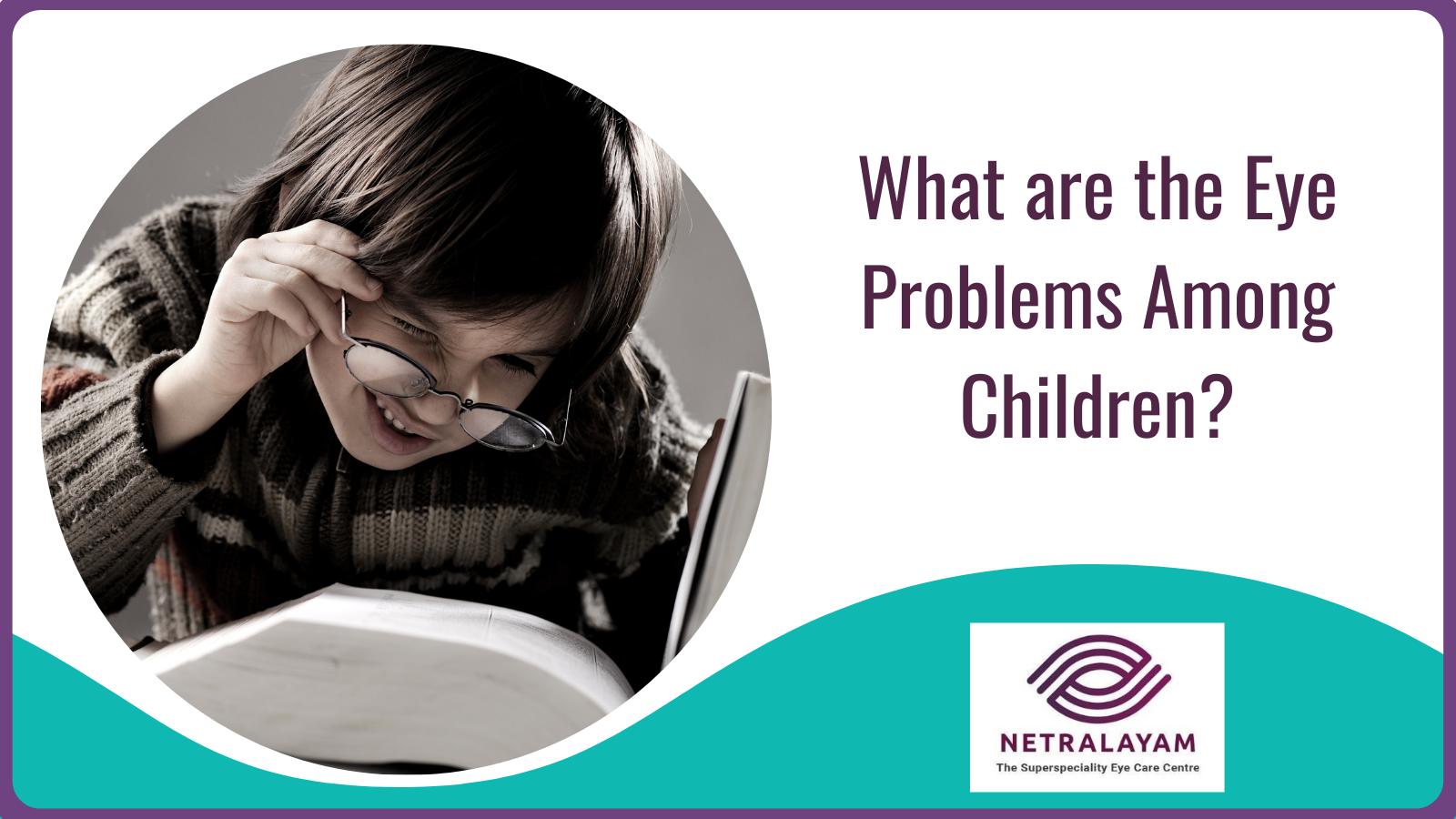Committed to Eye Care with Compassion, Technology and Competency
Committed to Eye Care with Compassion, Technology and Competency

2/21/2022
Childhood is a critical period for the development of good vision. Eye problems are fairly prevalent in school-aged children, although they are frequently overlooked until they occur. Children's visual impairments can manifest themselves in a variety of ways, some of which are more noticeable than others. It is critical to diagnose and treat visual problems while they are still developing. Regular checkups with a pediatric ophthalmologist can aid in the protection of your child's vision as they grow.
Strabismus is also known as crossed eyes, squinting, or lazy eyes. Strabismus occurs when the eyes point in opposite directions. When one eye is straight, the other can point inside, outward, up, or down. This might be evident all of the time, or it could come and go. It might be present at birth or develop later in life. The vision in the rotated eye does not develop normally in newborns and children with strabismus. Strabismus does not go away in children. Treatment is best beneficial when initiated at a young age and may include glasses, patching, exercises, surgery, or a combination of these.
See Also: How to Deal with Squints (Strabismus): Causes, Symptoms, and Treatment
It is also known as Retrolental Fibroplasia. It is an eye disorder that affects prematurely born newborns. The retina and its blood vessels are not fully grown when a newborn is born extremely preterm. Scarring in the retina normally occurs in both eyes as a result of this injury and can lead to blindness. If treatable – has to be urgently treated with laser to preserve the vision of the eyes. Some may progress fast and need surgery – but the outcome in such cases is generally poor.
Amblyopia occurs when one eye becomes lazy as a result of not seeing as clear a vision as the other. Strabismus, refractive error (incorrect focusing power), ptosis (droopy eyelid), and cataract are the most prevalent causes of amblyopia. If left untreated, it might result in severe visual loss. Patching and/or glasses are used to treat amblyopia. When therapy begins at a young age, there may be good improvement in vision.
Astigmatism is a condition in which things at both afar and a close distance seem blurry. Astigmatism is frequently associated with myopia or hyperopia. It’s treated with spectacles.
See Also: Astigmatism: Causes, Symptoms, Diagnosis and Treatment Options
It is a condition in which a person can see distant objects more clearly than close ones. Farsightedness is common in infants and younger children, although it diminishes as the eye matures. Some children may have more hyperopia than others, resulting in a persistent hazy vision in one or both eyes and preventing proper visual development. It's treated with spectacles and patching if lazy eye coexists.
It is a situation where kids can see closer items more clearly than farther away objects. Excessive myopia in children can cause lazy eye (amblyopia). Squinting and holding items very near may indicate severe myopia.
Conjunctivitis, popularly known as "Pink Eye," is an inflammation of the conjunctiva. Because of conjunctival irritation, the eye appears pink or red. It might be a viral or bacterial illness, or it could be an allergic reaction. In case of a viral infection, the kid may have a fever and a runny nose.
Watering eyes, also known as epiphora, can occur if the duct that drains tears from the eye to the nose becomes clogged. In many cases, clogged tear ducts resolve on their own, but if this does not occur within 12 months or if the infection becomes an issue, a minor surgical treatment may be required. At times clogged tear ducts aren't the sole reason for watery eyes, it's a good idea to have an eye checkup.
See Also: Blocked Tear Duct in Babies: Symptoms and Treatment
Severe conditions can occasionally exhibit signs and symptoms. As a result, children with suspected vision impairments should be evaluated.
Immediately visit a pediatric eye doctor if you see these signs and symptoms in your children:
Taking care of your child’s eyes health is very important for you. If you have questions regarding your child’s vision problem and screening, give us a call. We are one of the best pediatric eye hospitals in Kolkata. We have got some of the best pediatric ophthalmologists who are committed to take care of your children.
Comments are closed
